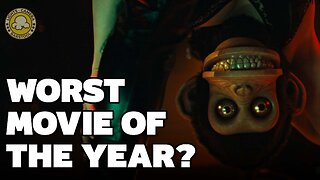Premium Only Content

Som ET - 35 - Universe - Hubble - Sombrero Galaxy #Shorts
NASA's Hubble Space Telescope has trained its razor-sharp eye on one of the universe's most stately and photogenic galaxies, the Sombrero galaxy, Messier 104 (M104). The galaxy's hallmark is a brilliant white, bulbous core encircled by the thick dust lanes comprising the spiral structure of the galaxy. As seen from Earth, the galaxy is tilted nearly edge-on. We view it from just six degrees north of its equatorial plane. This brilliant galaxy was named the Sombrero because of its resemblance to the broad rim and high-topped Mexican hat.
At a relatively bright magnitude of +8, M104 is just beyond the limit of naked-eye visibility and is easily seen through small telescopes. The Sombrero lies at the southern edge of the rich Virgo cluster of galaxies and is one of the most massive objects in that group, equivalent to 800 billion suns. The galaxy is 50,000 light-years across and is located 28 million light-years from Earth.
Hubble easily resolves M104's rich system of globular clusters, estimated to be nearly 2,000 in number - 10 times as many as orbit our Milky Way galaxy. The ages of the clusters are similar to the clusters in the Milky Way, ranging from 10-13 billion years old. Embedded in the bright core of M104 is a smaller disk, which is tilted relative to the large disk. X-ray emission suggests that there is material falling into the compact core, where a 1-billion-solar-mass black hole resides.
In the 19th century, some astronomers speculated that M104 was simply an edge-on disk of luminous gas surrounding a young star, which is prototypical of the genesis of our solar system. But in 1912, astronomer V. M. Slipher discovered that the hat-like object appeared to be rushing away from us at 700 miles per second. This enormous velocity offered some of the earliest clues that the Sombrero was really another galaxy, and that the universe was expanding in all directions.
The Hubble Heritage Team took these observations in May-June 2003 with the space telescope's Advanced Camera for Surveys. Images were taken in three filters (red, green, and blue) to yield a natural-color image. The team took six pictures of the galaxy and then stitched them together to create the final composite image.
Audio: Som ET - 35 - Universe
NASA image: https://stsci-opo.org/STScI-01EVT8YHAGM2WGQTV3DGKRFZ7Q.jpg
Credits: NASA and The Hubble Heritage Team (STScI/AURA).
#NASA #jameswebb #Hubble #ESA #space #science #astronomy #universe #telescope #cosmos #galaxy #nebula #stars
-
 3:21:29
3:21:29
Alex Zedra
6 hours agoLIVE! New Game | R.E.P.O
30.4K1 -
 1:52:42
1:52:42
Kim Iversen
8 hours ago💰 CHA-CHING! 💰 Trump Unveils Big Money Plans For Gaza AND America
51.1K114 -
 1:05:28
1:05:28
Flyover Conservatives
21 hours agoUkraine’s Dirty Secret: The Christian Persecution No One Wants to Talk About - Alex Newman | FOC Show
47.5K18 -
 2:00:20
2:00:20
Glenn Greenwald
13 hours agoThe View from Moscow: Key Russian Analyst Aleksandr Dugin on Trump, Ukraine, Russia, and Globalism | SYSTEM UPDATE #414
123K60 -
 1:10:55
1:10:55
Donald Trump Jr.
10 hours agoBREAKING NEWS: My Father Revokes Biden-Maduro Oil License, LIVE with Maria Corina Machado | Triggered Ep.220
197K194 -
 1:25:29
1:25:29
Sarah Westall
9 hours agoX-Files True History, Project Blue Beam, Cabal Faction War w/ Former FBI Agent John DeSouza
80.5K15 -
 7:03:49
7:03:49
Dr Disrespect
16 hours ago🔴LIVE - DR DISRESPECT - NEW PC VS. DELTA FORCE - MAX SETTINGS
167K27 -
 49:04
49:04
Lights, Camera, Barstool
1 day agoIs The Monkey The Worst Movie Of The Year?? + Amazon Gets Bond
72.5K4 -
 24:19
24:19
Adam Carolla
1 day agoDiddy’s Legal Drama Escalates, Smuggler Caught Hiding WHAT? + Philly Eagles & The White House #news
126K19 -
 10:12
10:12
Mike Rowe
2 days agoClint Hill: What A Man. What A Life. | The Way I Heard It with Mike Rowe
125K17